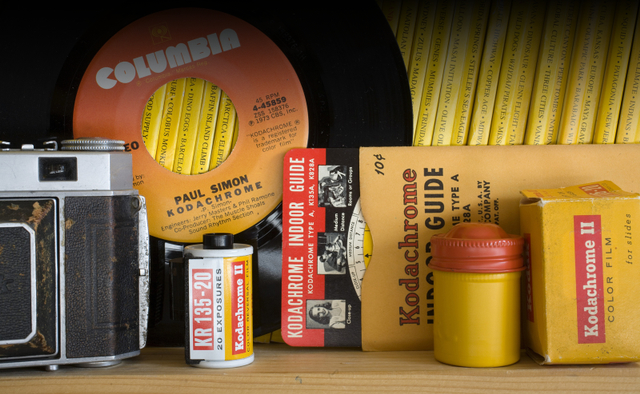What sets Kodachrome apart from other films?
In 1935, Leopold Mannes and Leopold Godowsky Jr. invented Kodachrome 16mm motion picture film. By 1936, Eastman Kodak Company (PDF) introduced the vivid film in 35mm for still images to the masses. The craft of photography and the way the world would look at the printed image changed forever.
Kodachrome is the oldest successfully mass marketed color film in history, over 74 years old on the date of the conclusion of it's production on June 22nd, 2009. Kodachrome is renown for it's incredible archival properties, natural color and ultra-fine rendering of details. In my opinion, Kodachrome is the single most influential color film of all time. It brought to life the otherwise black and white scenes that would fill the pages of Life, Time and National Geographic. As a child in the late seventies, I was fascinated by how the images seamed to float off the pages of these magazines when shot in Kodachrome.
Kodachrome would reign supreme as the best color film available from 1936 until around 1989. In the early nineties, more economical and colorful films (albeit more punchy color) would replace Kodachrome as the top film for many pros who simply wanted it faster and cheaper. Kodachrome is still to this day the most archival color film there is. When it is stored properly, in a dark, cool and dry place, it will hold its color well over 100 years. The legendary emulsion even has the distinction of being the only film to ever be the subject of a song in Paul Simon's May, 1973 release of the hit "Kodachrome".
"Mama is taking my Kodachrome away."
Not long ago, digital cameras were considered very expensive and out of reach for most consumers. Kodachrome was still available in three speeds, ISO 25, 64 and 200, was widely available and could be processed in a number of labs worldwide. On June 22nd, 2009, Kodak announced the discontinuation of Kodachrome 64, the remaining variety and now there is only be one lab on Earth in which to get it processed, "Dwayne's Photo" in Parsons Kansas. As all good things come to an end, I have felt compelled as a photographer to use the film in it's last days to give tribute to it and our diverse world through this project. In a world full of computer-aided color and less that is real, Kodachrome speaks volumes. Using the film in practice, it is not forgiving, you either nail the exposure, or you do not, there is not much room for error. But when you do align the unique characteristics of Kodachrome and the right light, it is like life: truly magical.
There is nearly a life lesson in using Kodachrome. Like most films and unlike digital, it makes you wait, get the shot, have faith in what you did and move on and get busy shooting, not miss things. While I do shoot lots of digital, I have more than a warm place in my heart for Kodachrome as I started using the film some 29 years ago at age 13. The best I can hope do is to try to do it justice in my work and spread the awareness that it might not be around for much longer and get more people to use it before it is gone.
For what it is worth, I am very impressed that Kodak has made the film this long. It truly is a statement in product commitment and longevity so I have to really thank them for that.
